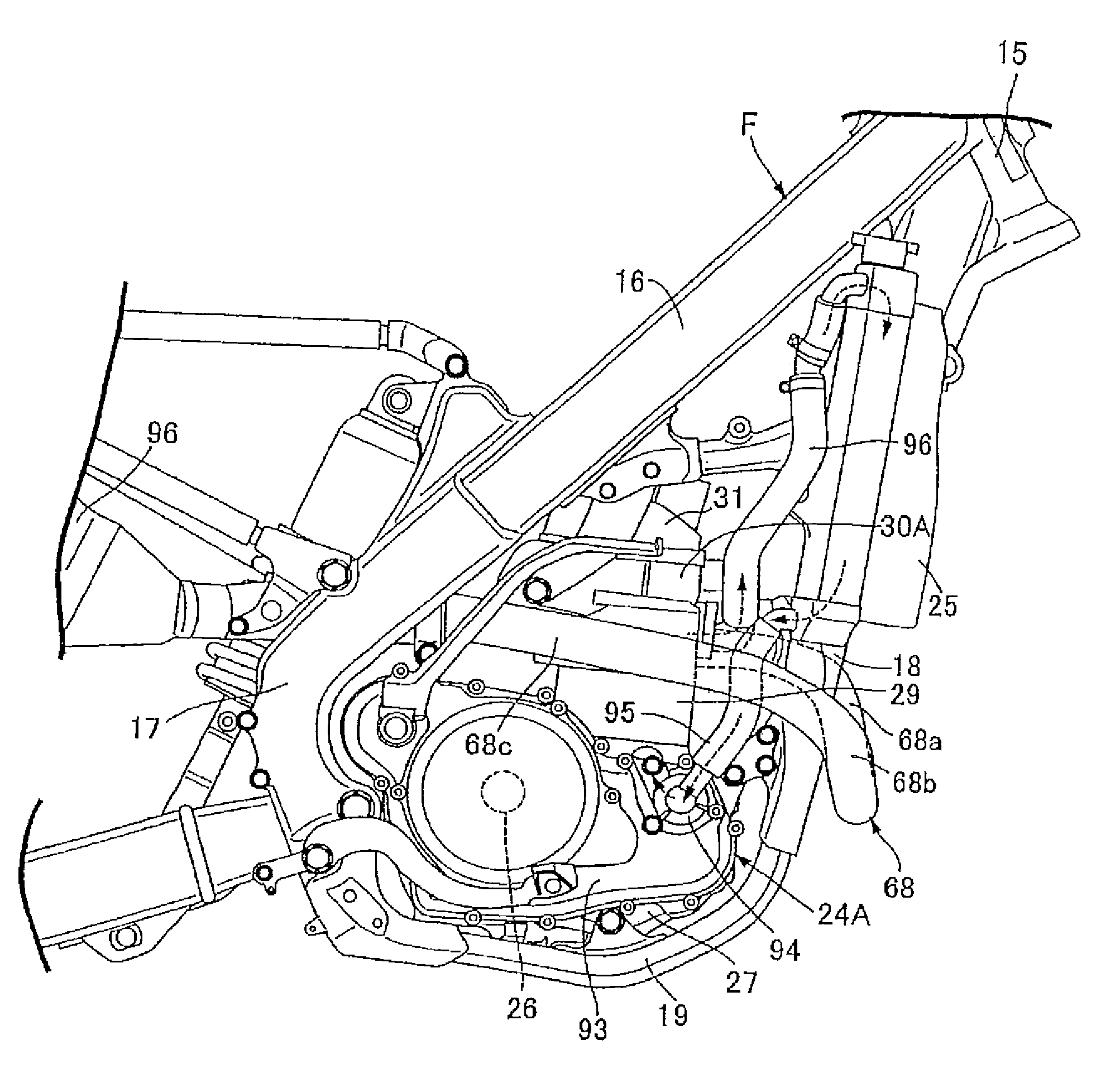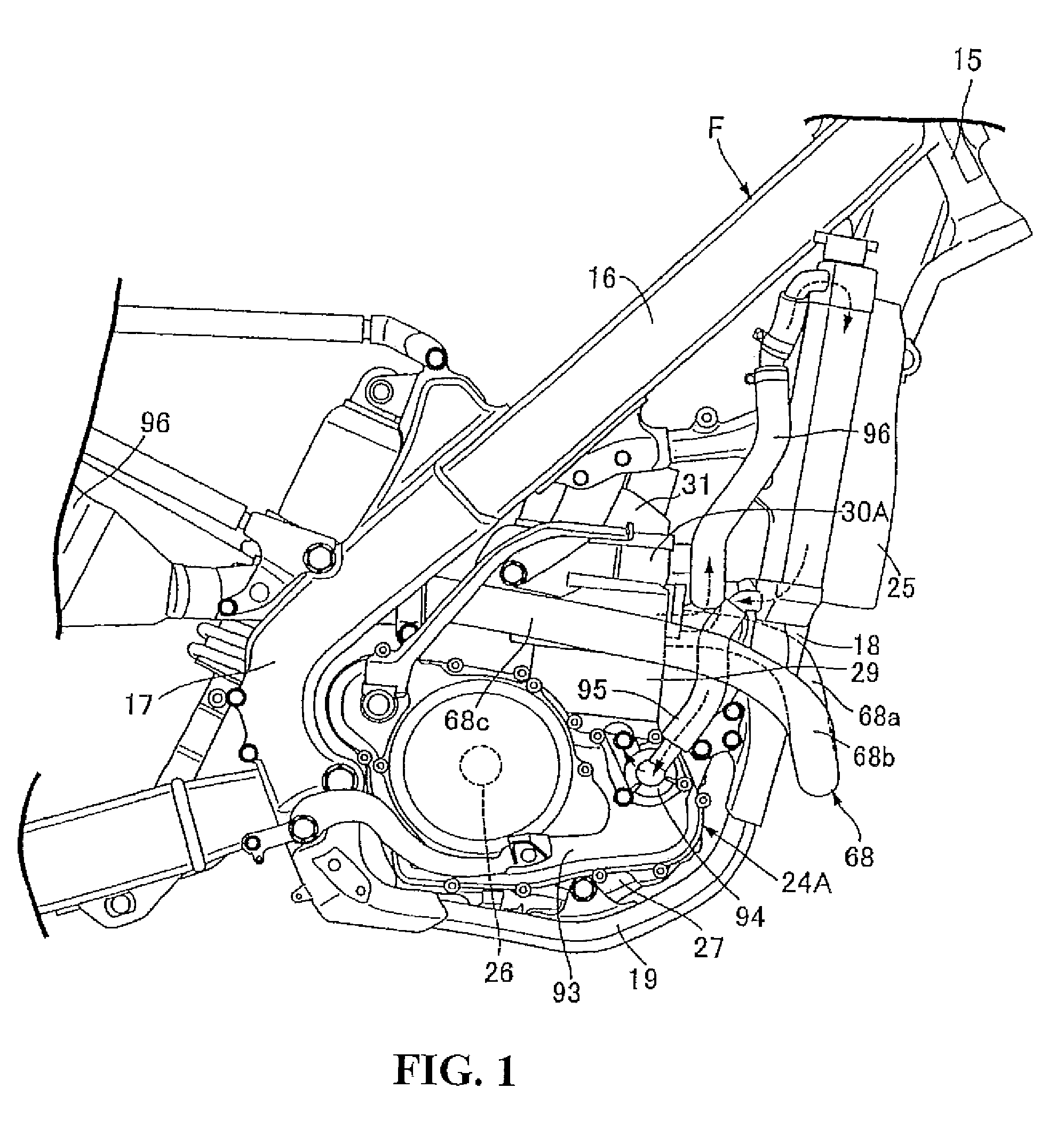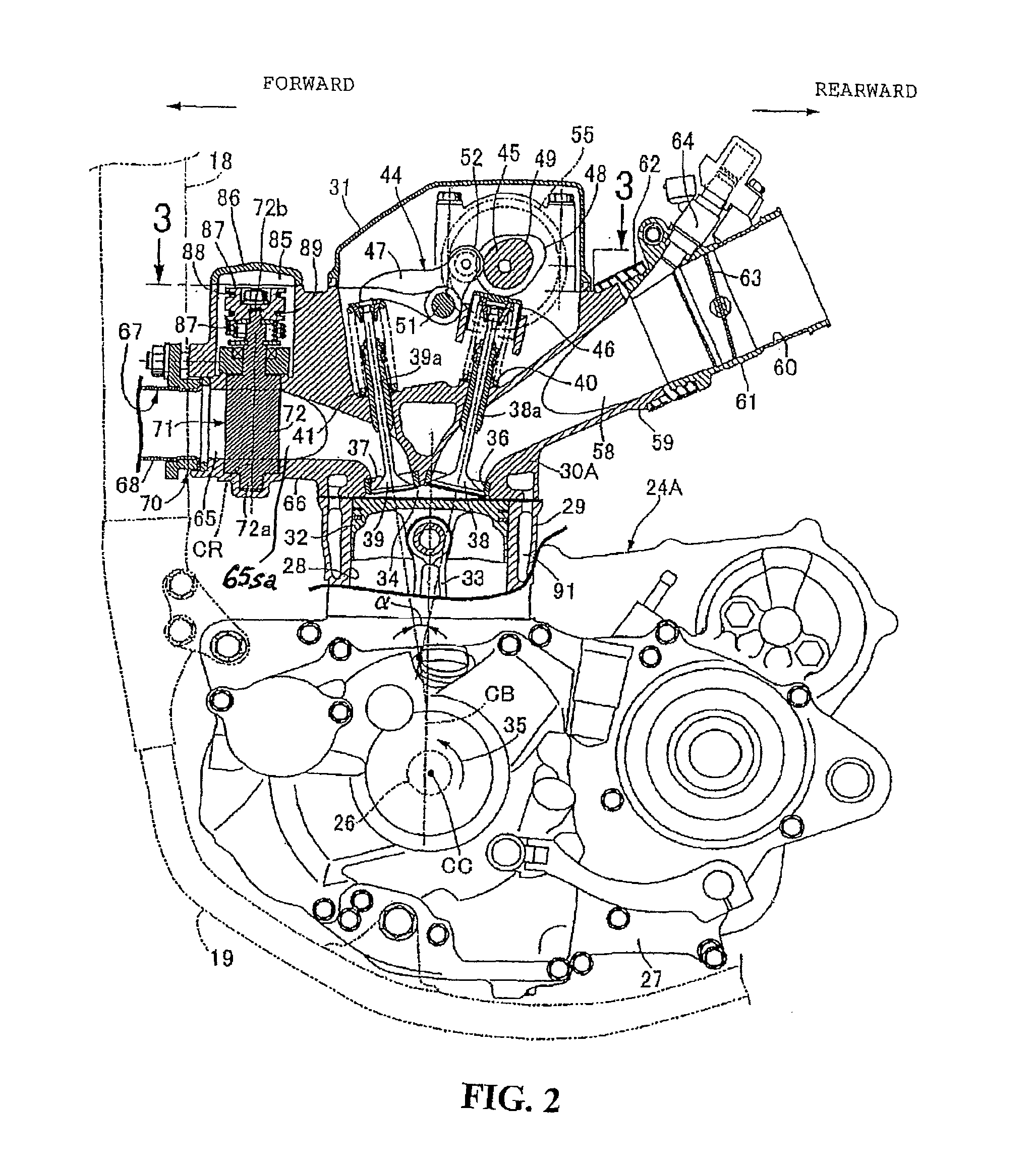Exhaust control device for vehicle engine
a technology for controlling devices and exhaust, which is applied in the direction of electrical control, process and machine control, etc., can solve the problems of difficulty in controlling the exhaust flow rate and flow with accuracy, and achieve satisfactory exhaust control, high exhaust flow rate, and reduction of exhaust volume
- Summary
- Abstract
- Description
- Claims
- Application Information
AI Technical Summary
Benefits of technology
Problems solved by technology
Method used
Image
Examples
first embodiment
[0038]FIGS. 1 through 7 illustrate the present invention.
[0039]Referring first to FIG. 1, a body frame F of a motorcycle, a small-sized vehicle, includes a head pipe 15 provided at a front end; a pair of left and right main frames 16 extending rearward downward from the head pipe 15; a pair of left and right pivot plates 17 joined respectively to the rear portions of the main frames 16 and extending downward; a down frame 18 extending downward from the head pipe 15; and a pair of left and right lower frames 19 connecting the lower end of the down frame 18 with both the pivot plates 17. An engine body 24A of a water-cooled 4-cycle single-cylinder engine is carried by the body frame F so as to be disposed in a space surrounded by the main frames 16, the pivot plates 17, the down frame 18 and the lower frames 19. Radiators 25 are separately disposed forward of the engine body 24A to lie on either side of the down frame 18 and carried by the down frame 18.
[0040]With additional reference...
second embodiment
[0087]FIGS. 8 through 10(a) and 10(b) illustrate the present invention. FIG. 8 is a longitudinal cross-sectional left-lateral view of a 4-cycle engine corresponding to that of FIG. 2. FIG. 9 is an enlarged cross-sectional view taken along line 9-9 of FIG. 8. FIGS. 10(a) and 10(b) are enlarged views of an essential portion of a rotary valve in FIG. 8, for assistance in explaining respective states, when the valve is fully opened FIG. 10(a) and when fully closed FIG. 10(b).
[0088]Incidentally, the portions corresponding to those of the first embodiment are only indicated with like reference numerals and their explanations are omitted.
[0089]An engine body 24B includes a crankcase 27, a cylinder block 29, a cylinder head 30B, and a head cover 31. The crankcase 27 rotatably supports a crankshaft 26 with an axis extending in the left-right direction of the motorcycle. The cylinder block 29 has a cylinder bore 28 and is joined to the upper portion of the crankcase 27. The cylinder head 30B ...
fourth embodiment
[0110] since the rotary valve 71 is disposed in the exhaust port 116, the passage sectional area of the exhaust port 116 will not be reduced when the rotary valve 71 is fully opened. In addition, although the relatively large rotary valve 71 is disposed in the exhaust side connection pipe 117 of the cylinder head 30D, the rotary valve 71 is disposed in the exhaust side connection pipe 117 at a position offset from the center CL of the exhaust port 116 toward the side opposite to the cam chain chamber 57. Thus, it is easy to avoid the interference between the rotary valve 71 and a driven sprocket 55 provided on the cam shaft 45 to constitute part of the timing transmission mechanism 53. This can downsize the cylinder head 30D.
PUM
 Login to view more
Login to view more Abstract
Description
Claims
Application Information
 Login to view more
Login to view more - R&D Engineer
- R&D Manager
- IP Professional
- Industry Leading Data Capabilities
- Powerful AI technology
- Patent DNA Extraction
Browse by: Latest US Patents, China's latest patents, Technical Efficacy Thesaurus, Application Domain, Technology Topic.
© 2024 PatSnap. All rights reserved.Legal|Privacy policy|Modern Slavery Act Transparency Statement|Sitemap



